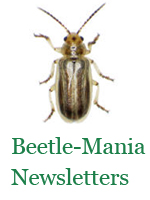Hydrellia pakistanae Deonier and H. balcuinasi Bock
[Diptera: Ephydridae]
Biology | History | Status | Management | Weeds | Literature | Links
The larvae of these flies mine the leaves of hydrilla plants. Due to their short life cycle, approximately 20 days, there was initially some problems with establishment. The basic biology of the two species is quite similar.
Hydrellia pakistanae was discovered in Pakistan for the biological control of hydrilla. The first release of the fly was in southern Florida in 1987 and by 1990 a population was established. A summary of the releases and recoveries in Florida is found in Center et al. (1991). It has been released and established in Texas.
Known Release History of Hydrellia pakistanae in Texas
|
Site |
County |
Release |
# of Releases |
Specimens Released
|
Established |
|
Coleto Creek Reservoir
|
Goliad
|
6/94-7/95 |
9 |
19,584 |
Yes |
|
Choke Canyon Reservoir
|
Live Oak
|
1/93-3/95 |
29 |
169,317 |
No |
The adult flies are often released into a cage on top of a mat of hydrilla. This allows the adults to lay eggs with a minimum of disturbance from outside predation. The cage is typically removed in a week or two.
Hydrellia pakistanae is known to feed only on hydrilla (Buckingham et al. 1989).
Buckingham, G. R. 1988. Reunion in Florida – Hydrilla, a weevil, and a fly. Aquatics 10(1): 19-25, illus.
Buckingham, G. R., E. A. Okrah and M. C. Thomas. 1989. Laboratory host range test with Hydrellia pakistanae (Diptera: Ephydridae), an agent for biological control of Hydrilla verticillata (Hydrocharitaceae). Environ. Entomol. 18(1): 164-171.
Center, T. D., F. A. Dray, Jr., and W. C. Durden. 1991. Release and Establishment of Insect Biocontrol Agents for Hydrilla Control. Waterways Experiment Station, MP A-91-3.

